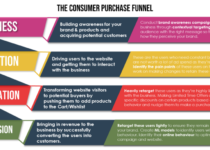Migration to Google Analytics 4 (GA4) and Consent Management
Hey there!
There is a revolution underway in Europe that businesses need to consider. If you haven’t checked your Google Analytics account and don’t know what GA4 is, I hardly recommend you continue reading.
Moving from Universal Analytics (UA) to Google Analytics 4 (GA4) can be challenging. However, this change can lead to many benefits, as it helps track user interactions across multiple platforms and channels. That’s why I’m here to help you by providing a comprehensive guide on migrating to GA4 while keeping in mind crucial data privacy laws such as GDPR and CCPA. My main aim is to help you adopt GA4’s advanced features to gain better data insights while maintaining user privacy. Let’s get started!
Introduction to Google Analytics 4:
Google Analytics 4 offers a new and improved approach to analytics, providing a more comprehensive view of user data across various platforms. Unlike UA, GA4 utilizes an event-based data model, which enhances privacy controls. With UA ceasing to process new hits by July 1, 2023, organizations need to migrate to GA4 promptly.
Strategy for Migrating to GA4:
I’d recommend the phased approach to ensure a smooth transition to GA4 I shared below:
Phase 1: Preparation and Planning: Review current UA settings, understand GA4’s capabilities, and set new measurement objectives.
Phase 2: Dual Implementation: Run GA4 alongside UA to ensure data consistency and fine-tune settings.
Phase 3: Full Transition: Complete the switch to GA4 after verifying that the data is accurate and the team is well-versed in the new system.
Managing Consent in GA4:
Compliance with privacy laws requires effective management of consent for personal data usage.
Essential Elements of Consent Management:
Collecting Consent: Obtain explicit user consent before collecting data, providing clear information about the data collected and why.
Storing Consent: Keep consent records secure yet accessible to demonstrate compliance and manage user preferences.
Withdrawing Consent: Enable users to easily revoke their consent, ensuring the system adapts quickly to these changes.
Legal Regulations and Compliance:
Adhering to critical legal frameworks such as GDPR and CCPA is vital. It’s essential to ensure compliance with local data protection laws based on the organization’s operational locations.
Required Consents under GA4:
Cookie Usage Consent: Under laws like the GDPR, consent must be obtained before placing non-essential cookies on a user’s device.
Data Collection for Advertising Features: Specific consent is required to collect data for personalized advertising, including using Google Signals data.
Geolocation Data: Explicit consent is needed to collect precise geolocation data.
Implementing Consent Management with GA4:
Operate GA4’s integrated features along with consent management platforms to effectively handle user consents:
Integration with Existing Consent Management Platforms (CMPs): Configure GA4 to respect the consent settings established through CMPs.
Google Consent Mode: Adjust the behavior of Google tags based on the user’s consent status.
Recommendations:
Migrating to GA4 is both a compliance measure and an opportunity to enhance analytic capabilities. Establishing effective consent management practices is essential to protect user privacy and ensure regulatory compliance. Adopting GA4 is seen as both strategic and necessary.
Note that if your website is built using WordPress, you can also use WordPress CMP plugins.
Action Items:
– Begin by setting up GA4 alongside UA.
– Reassess and enhance consent management practices to align with GA4 requirements and applicable legal standards.
– Continuously train and update the team on the latest in analytics and privacy regulations.


